Colour accuracy is a key factor that influences the quality that printers provide to brand owners. Rushikes h Aravkar finds out how the technology makes it easier to match the final print on press to a proof copy.
Managing colour is one of the most complex and challenging aspects of producing a quality sheetfed press run, whether traditional litho or digital. Or at least, it used to be. But software, hardware, systems and standards are making it easier than ever to ensure colour is consistent and accurate wherever it goes.
In Indian scenario, print firms who prefer colour managed workflow are those who print for international print buyers or those who cater to premium jobs where colour accuracy is important. Afsal Kottal, business director, Percept Print Solutions, observes, “When they try to achieve colour accuracy, they understand it is difficult and makes them lose time, material and cost they discover that the way to achieve these high quality requirements is by implementing colour management solutions.”
The other set of clients, according to Kottal, are those who prefer to be lean and productive and thereby stay ahead of the competition, they opt for colour managed workflow.
Colour experts have spent years doing the heavy lifting on colour standards. The ISO 12647-2, draws directly on the international ISO 12647-2 for halftone colour separations, proof and production prints. Work is now underway on a separate digital colour standard, ISO 15311-2.” There’s also Fogra’s Process Standard Offset (PSO) template and certification processes such as the Ugra process.
Bengaluru-based Sai Packaging has invested in its pre-press system in a drive to achieve standardisation on proofing, viewing, platemaking and production via the ISO 12647-2 UGRA colour certification. As Arvind Sekhar of Sai states, “When we have ISO 9001 and other certifications for our processes, how come there is nothing for the most critical aspect of our product – colour?”
Arvind said, “It turned out that there is an International Standard – UGRA – Swiss Center for Competency in Printing and Media. Under the guidance of Satish Nayak – we cleared this certification in our third attempt. It helped us move our thinking of printing from an art to a science. It was expensive, difficult, but enjoyable.”
The beauty of all this is that for the typical print business owner or manager, the complex issue can be more or less fully automated. The pressroom itself is becoming a hive of colour management activity. Onboard technology can integrate the process with the printing and take the headache out of colour management. Since Drupa 2012, some of the new crop of colour management-enabled presses has begun filtering into India.
‘Off-board’ colour control
Inline colour management built into the press may be the Holy Grail, but it comes at a significant price. In the current cautious climate, there’s a strong body of opinion that pre-press-driven colour management more than fits the bill.
At Varna in Kochi in Kerala, an offset printer with a staff of some 50, managing director K J Thomas is confident of the company’s work. A Heidelberg Prinect Image Control system scans the sheets and feeds the colour profiles to the ink keys on Varna’s Heidelberg presses. Colour data comes through the profiles via the repro phase. The job number is called up and the colour profiles will be included. “We do a makeready, adjust the colour, and hold the profiles from the makeready stage throughout the run,” Thomas says.
Prinect’s Image Control can be used for up to four presses at once. The next step for Thomas would be on-press colour management, but Thomas believes this decision is best left until the time comes for a general upgrade of the presses.
All onboard for colour
Sascha Ehrenberg of Manroland Sheetfed says integrated colour management is available on the latest Roland 700 HiPrint and Roland 900 series presses in configurations of four-, six- and eight-colour.
Installed over the impression cylinder of the last printing unit, the InlineColor Pilot automatically measures the colour for the job to set densities programmed by the operator before the start of production. This process is spread between both sizes, not just large-format presses.
“The operation is relatively simple following initial training by the instructor when the press is being commissioned, so long as you have printers with a good knowledge of colour control by densities and densitometry. It is considered by some customers to be green, given the time and material savings,” says Ehrenberg.
Colour management with GMG
“Quality control has to start from pre-press and extend to proofing,CTP, printing and viewing conditions,” explains Kottal. “For colour measurements, the basic requirements include a plate reader, a spectrophotometer, a densitometer and if possible an add on CIP3 and closed loop solution. This helps printers to ensure colours will be as per clients expectation before the plates are made and run with standards and meet clients expectation every time with minimum or no operator’s colour expertise.”
GMG Color Server is at the heart of GMG’s colour solutions. Kottal informs, “GMG works on the concept of colour remains same wherever its printed, meaning the brand colours and images look same in colour when it prints on coated paper, woodfree, newsprint, packaging boxes, digital print, large format etc.” It ensures that colour remains as close as possible to coated paper results (ISO39 or Pacspace) irrespective of paper type and process.
When it comes to investment, especially in software solutions, the primary query that one develops is the ROI. “A single four-colour press can get an ROI in 10-12 months and earlier for people with more presses. In addition, 12-25% ink savings and can be implemented in conventional and UV inks.”
According to Kottal, the print firms, who print for local market, feel that colour management is just for quality improvement and that their clients are neither asking for, nor are ready to pay for quality or standardisation is not giving them returns. “I would advise them to review their productivity and I can assure that they lose a lot of time, material and money because of uncontrolled processes and the data they get from floor being untrue.”
Kottal feels that iIt is important for a print firm to understand the current production performance level and set key point indicators to implement continuous improvement in the process and review the shop floor data. “We now assist print firms with our “Know Your Productivity Solution” to evaluate their productivity and take necessary steps to improve with confidence and a clear ROI such as implementing colour management etc”
Colour measurement with X-Rite IntelliTrax
Vishnu Kamat, head of product management at AGS, says the vendor offers a full range of colour management systems across its complete press range from the German to Japanese presses.
He cites X-Rite IntelliTrax, a measuring device located on the press, and before the perfecting unit in long perfectors. At its core, is a spectrophotometric device that corrects colour, measuring process and spot colours, as well as register in the quality control strip.
It reads a colour strip located at the front edge or centre of the sheet, and automatically measures the densities. It then instantly reports these results on-screen, so press operators can make adjustments and get to approved colour faster.
Kamat says there is no great training curve and ROI is typically well under 12 months. “This system has very quickly become the colour control system of choice across all the models it is available on.”
New Jack in Mumbai runs three Heidelbergs with Intellitrax. Saubhagya Sakesaria says, the advantage of colour management is the ability to scan sheets and maintain colour standards.
“With such a device, the operator, if he is working very quickly, will at best get a scan of 10 sheets, you’re getting more constant feedback and tighter control. Ink setting time has reduced at least 20 minutes per make-ready and material wastage has increased profitability.”
Additionally, Intellitrax integrates with the press, which automatically selects colour reference values from a database, based on substrate type and ink series, rather than leaving it to the operator, who simply has to check the specs against the job ticket, says Sakesaria. “The press operator has all that visual, graphical feedback in real time, as well as the numerical feedback instantly through his console.”
Reporting occurs every 200 sheets, providing information such as dot gain and solid primary colour values. Accurate pre-setting information is vital to ensure the press works at top efficiency.
“When the operator sees a section he’s printing is coated paper type 1 with a particular ink series, he can then look at the plate calibration ID mark and have confidence that what’s on the plate is in harmony with what’s being presented to him as far as those attributes go,” Sakesaria adds.
Case study: Comart Lithographers
Fred Poonawala, director of Mumbai Comart, handles, pre-press, colour management and project management for a mix of advertising agencies and direct customers.
Poonawala says that colour is a forte, and for client like Conde Nast, Comart driving ideal brand colours to boost colour accuracy, which in turn has resulted in speedier makereadies.
In fact, he went so far as to agree with the observation that handling colour management is fast becoming a ‘green-button’ push; and absolutely important.
Amit Navarange, production director at Condé Nast India, describes his association with Comart started when they launched their first magazine - Vogue. “It has been a fantastic association with Comart. Comart was extremely proactive in setting up colour management protocols for Condé Nast – thanks to Fred Poonawala and his colour management team, which is headed by Dr Rashid Mistry.”
“At Comart we had created a dedicated, secure set-up for the repro work of Condé Nast magazines. The set-up was complete with a dedicated, colour managed workflow and proofing solution from GMG – Epson (with a back-up). It has a controlled access so that only authorised personnel can access the department to maintain strict confidentiality of our content.
Navarange adds, “Having a dedicated workforce ensures that the team only works on our magazines and is trained, oriented according to our workflow and requirements. This helps in better understanding of our standard colour correction / retouching requirements and best understanding of our very specific colour correction briefs on important sections of the magazines.”
|
Pre-press - ISO checklist to maintain quality |
|
• Make sure the files are made with the correct working space (colour settings) in the pagemaking software
• The color setting must be synchronized such that all software ( photoshop , AI,ID ) have the same color setting
• Check and maintain the ambient light in the prepress / area of color correction
• Use monitors that be calibrated as per the ISO standards and calibrate regularly
• Proof must be taken on a calibrated printer on certified proofing paper
• Digital proofer must be regularly calibrated such that the values are within the ISO12647-7 tolerance.
• Proofs must be certified with the media wedge.
• Metameric strips ( light indicators ) to be used to understand the lighting condition
|
|
Press - ISO checklist to maintain quality |
|
• Check and maintain the ph , conductivity and the temperature of the fountain solution.
• Verify the paper and ink Lab as per ISO 12647
• Regularly check the quality of alcohol used with areometer
• Always tight the blankets with the correct torque using a torque wrench
• Check the blanket to the bearer height and maintain the same as per the manufacturer
• Check and maintain the roller setting regularly.
• Maintain the viewing conditions of the press console as per the standards.
• Print to CIE Lab target values as prescribed by ISO12647 and Compare to ISO for solid color, TVI, and Mid-Tone spread.
• Densitometer must be set to Status E and always do white calibration ,reference white paper when measuring density and absolute white when measuring Lab
• Care to be taken for the backing sheet ( white backing or black backing ) when measuring with the densitometer
• Maintain a standard operating procedure (SOP) for all process
|

Sakesaria explains how Intellitrax maintains the colour standards at New Jack in Mumbai




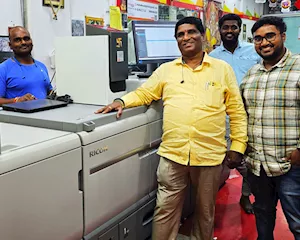


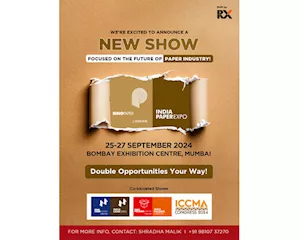
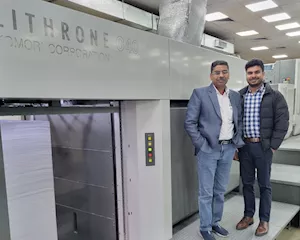

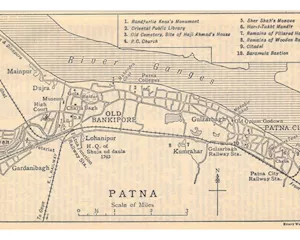
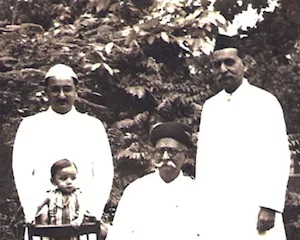
 See All
See All